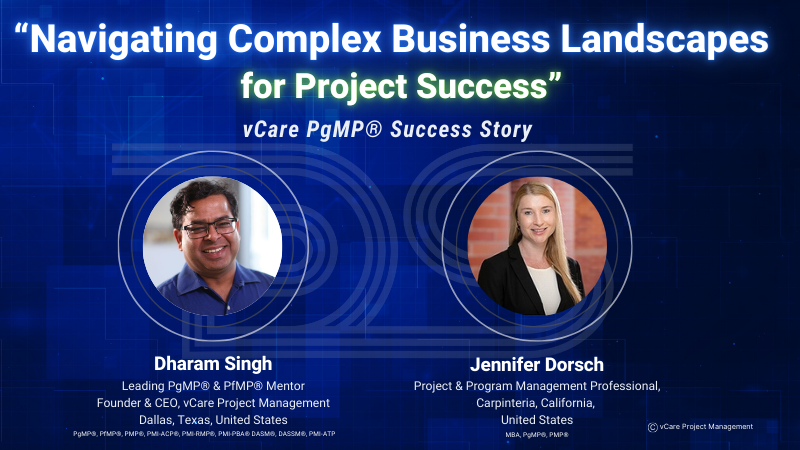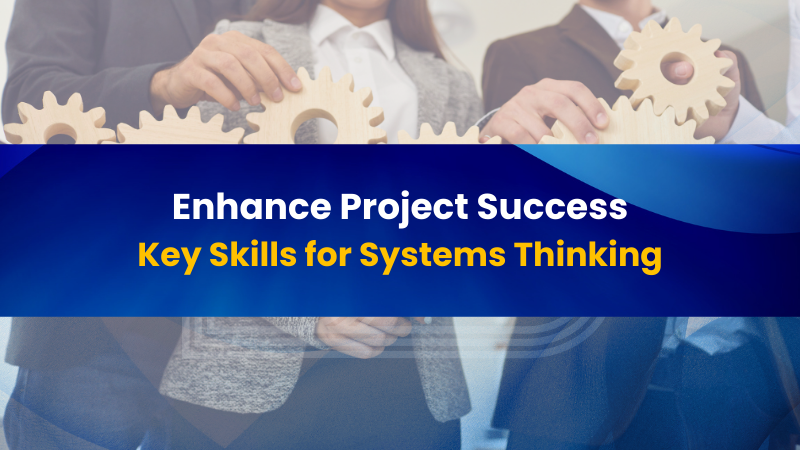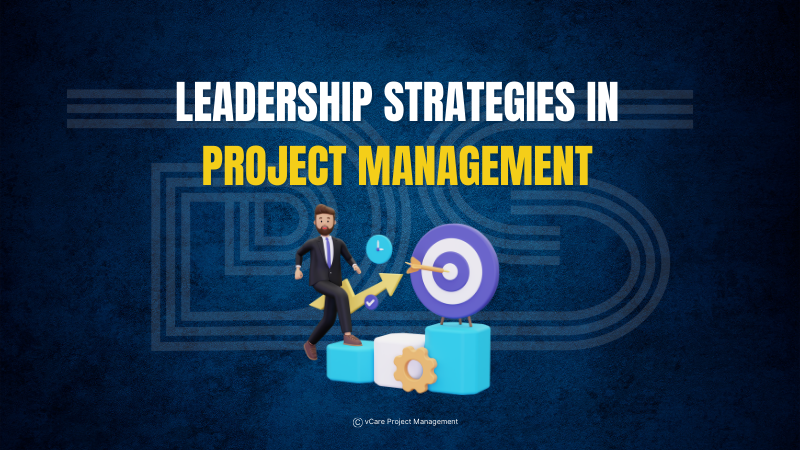
by DharamCW | Aug 30, 2024 | Leadership in Project Management, Podcast, Project-Program-Portfolio Management Knowledge
Navigating Complex Business Landscapes for Project Success | Q&A | Jennifer Dorsch | Dharam Singh
🔍 Key Takeaways:
– How do you balance strategic alignment and operational flexibility in managing large-scale transformation projects?
– How effectively have you seen organizations blend predictive and agile practices to address diverse project challenges and needs? Are hybrid management frameworks gaining traction as a fit-for-purpose approach?
– Can you share a successful case where agile and traditional project management methods were integrated into a large-scale project?
– In the face of technological disruption, why do you think emerging leadership imperatives embrace agility and skill to thrive in an uncertain and changing environment?
– What are the key factors for fostering innovation and adaptability in project teams?
🎥 Watch now: https://www.youtube.com/watch?v=OPMUWIidYrU
🚀 Seize the opportunity to Elevate Your Project Management Career:
– Register for my upcoming PMI Certification Success Story Webinars: https://bit.ly/4fJdX0c / https://bit.ly/4fFJTTn
– Book an obligation-free consultation session on Project management Career, training, and certifications: http://talktodharam.com
– Discover training offers and certification discounts: https://bit.ly/3jWVepD
– Stay updated with our Q&A series and certification success stories by subscribing to the vCare Project Management YouTube channel at https://bit.ly/2YF0wJl
– Follow my podcasts and interviews with Project Management Experts on YouTube at https://bit.ly/2NDY8wd
#ProjectManagement #Leadership #Innovation #Agility #BusinessSuccess #AgileLeadership #Transformation #Innovation #HybridManagement #LeadershipDevelopment #BusinessStrategy #OrganizationalAgility #ChangeManagement #ProjectSuccess #TeamAdaptability #StrategicAlignment #OperationalExcellence #EmergingTrends #PgMP #PfMP #PMP #AskDharam #DharamSingh #VCareProjectManagement

by DharamCW | Aug 28, 2024 | Leadership in Project Management, Project Management, Project-Program-Portfolio Management Knowledge
Enhance Project Success: Key Skills for Systems Thinking
As a project manager, you play a crucial role in the success of a project. A project is a system of interdependent and interacting domains of activity. Systems thinking entails a holistic view of how project parts interact with each other and external systems. Systems are constantly changing, requiring your consistent attention to internal and external conditions. Your responsiveness to system interactions allows your project teams to leverage positive outcomes.
The following skills support a systems view of the project:
– Empathy with the business areas
– Critical thinking with a big-picture focus
– Challenging assumptions and mental models
– Seeking external review and advice
– Use of integrated methods, artifacts, and practices so there is a common understanding of project work, deliverables, and outcomes
– Use of modeling and scenarios to envision how system dynamics may interact and react
– Proactive management of the integration to help achieve business outcomes

Enhance project success with key systems thinking skills—holistic project management in action.
By honing these skills, project teams can enhance collaboration, adaptability, and, ultimately, project success. Remember, these skills are not just beneficial; they are essential for your professional growth and the success of your projects.
🚀 Elevate Your Project Management Career:
– Register for my upcoming PMI Certification Success Story Webinars: https://bit.ly/3Lpjifb / https://bit.ly/4fJdX0c
– Book an obligation-free consultation session on Project management Career, training, and certifications: http://talktodharam.com
– Discover training offers and certification discounts: https://bit.ly/3jWVepD
– Stay updated with our Q&A series and certification success stories by subscribing to the vCare Project Management YouTube channel at https://bit.ly/2YF0wJl
– Follow my podcasts and interviews with Project Management Experts on YouTube at https://bit.ly/2NDY8wd
#SystemsThinking #ProjectManagement #SkillsDevelopment #PMBOK #PMBOK7 #PMP #Empathy #Innovation #Agile #Waterfall #ProjectLeadership #HolisticProjectManagement #CriticalThinking #PMPCertification #PMPExam #PMPTraining #BusinessAnalysis #ChangeManagement #ProjectDelivery #ProjectSuccess #ProjectTeams #SystemsDynamics #BusinessOutcomes #HybridProjectManagement #AskDharam #DharamSingh #VCareProjectManagement

by DharamCW | Aug 18, 2024 | Leadership in Project Management, Project-Program-Portfolio Management Knowledge

Master leadership strategies in project management with insights from PMBOK 7th Edition.










Join us for an insightful webinar hosted by vCare Project Management, featuring Sarah Wright, PMP, PgMP, a Senior Technical Project Manager at Specialized Bicycle Components based in Morgan Hill, California, USA. In this webinar, Sarah will cover essential topics for senior project, program, and portfolio management professionals.
Session discussion topics include the following:
– Strategies for Maintaining Team Morale and Productivity During High-Pressure Projects
– Pivoting Project Management Strategies to Enhance Team Well-being
– Leveraging Resource Management Tools for Project Success
– Measuring the Impact of Resource Allocation on Project Outcomes and Team Satisfaction
– Integrating Agile Principles into Resource Management Practices
– Proactively Identifying and Addressing Root Causes of Stress in Project Teams
By attending, you’ll gain insights from Sarah’s experiences and earn 1 Professional Development Unit (PDU) and a special discount code for upcoming PMP, PgMP, and PfMP programs. Take advantage of this opportunity to enhance your skills and save on future programs.
🔗 Reserve your spot now: https://bit.ly/4fJdX0c
Session Date: Thursday, 12th September 2024
Session Time: 10:00 AM – 11:00 AM (AKDT) / 11:00 AM – 12:00 PM (PDT) / 12:00 PM – 01:00 PM (MDT) / 01:00 PM – 02:00 PM (CDT) / 02:00 PM – 03:00 PM (EDT) / 03:00 PM – 04:00 PM (BRT) / 07:00 PM – 08:00 PM (BST) / 08:00 PM – 09:00 PM (CEST) / 09:00 PM – 10:00 PM (AST) / 10:00 PM – 11:00 PM (GST)